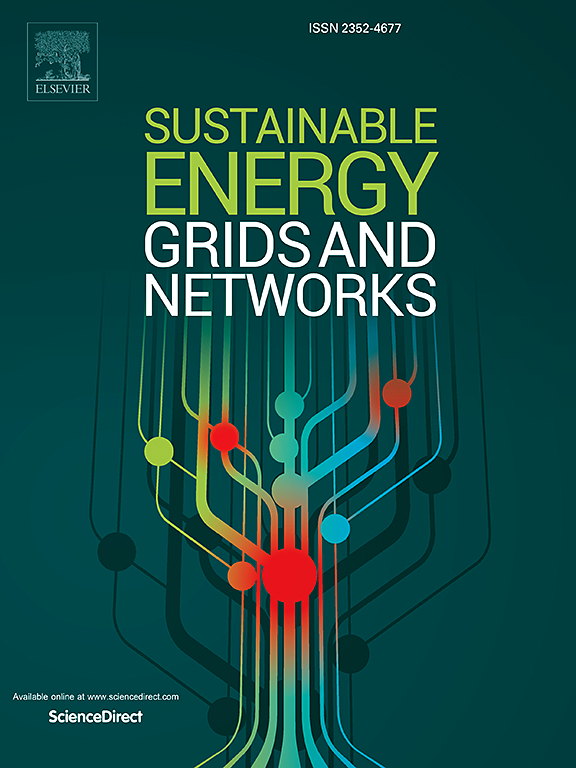Low-carbon scheduling of mobile energy storage in distribution networks based on an equivalent reconfiguration method
IF 4.8
2区 工程技术
Q2 ENERGY & FUELS
引用次数: 0
Abstract
Under the context of low-carbon power systems, the integration of high-penetration renewable energy and mobile energy storage systems (MESS) presents new challenges for distribution network scheduling, primarily in the coupling of power and transportation networks and the complexity of allocating users' carbon emission responsibilities. To address these challenges, this study proposes a bi-level optimization model that combines demand response mechanisms and carbon flow theory for the low-carbon scheduling of MESS. The upper-level model optimizes the global scheduling strategy of distribution network operators, while the lower-level model captures the dynamic demand response behavior of users, achieving collaborative optimization among multiple stakeholders. Using an equivalent reconfiguration method, the coupling issue between the power grid and transportation network is transformed into a pure distribution network problem. Furthermore, carbon flow theory and the Shapley value method are employed to analyze carbon emission distribution and allocate carbon responsibility on the load side. Simulation results based on the IEEE-33 node distribution network and a simple transportation network show that the proposed model can reduce system carbon emissions by 21.14 %, lower user costs by 5.2 %, and increase operator revenue by 10.21 %. These findings validate the model’s ability to balance economic benefits and low-carbon operational goals, providing a practical and effective solution for the optimal scheduling of distribution networks with high renewable energy penetration.
求助全文
约1分钟内获得全文
求助全文
来源期刊

Sustainable Energy Grids & Networks
Energy-Energy Engineering and Power Technology
CiteScore
7.90
自引率
13.00%
发文量
206
审稿时长
49 days
期刊介绍:
Sustainable Energy, Grids and Networks (SEGAN)is an international peer-reviewed publication for theoretical and applied research dealing with energy, information grids and power networks, including smart grids from super to micro grid scales. SEGAN welcomes papers describing fundamental advances in mathematical, statistical or computational methods with application to power and energy systems, as well as papers on applications, computation and modeling in the areas of electrical and energy systems with coupled information and communication technologies.
 求助内容:
求助内容: 应助结果提醒方式:
应助结果提醒方式:


